As I’ve mentioned before in this blog, the winter of 2008 was a particularly brutal one in northern Utah. During January and February there was much more snow than usual and it was bitterly cold. During most winters our Northern Harriers rely primarily on voles as a food supply but in 2008 with the voles under the deep crusty snow our harriers were desperate for food.
Birds of North America Online provides extensive information on the dietary habits of harriers. It lists small to medium-sized mammals (primarily rodents), birds, reptiles and frogs as harrier food sources, stating further that the diet of harriers during winter in their northern range (which includes northern Utah) consists of voles “almost exclusively”. I can find no mention of harriers eating fish, ever!
Each year in early February some of our wetlands managers treat some of our ponds with rotenone (a chemical that prevents oxygen from being absorbed across fish gill membranes) in an effort to control the invasive and damaging carp that do so much damage to the emergent vegetation which is so vital for waterfowl. So, in 2008 for a few weeks, our desperate and starving harriers began to eat fish! In the three winters since then I have never seen harriers eating fish even though the dead carp are always plentiful after the rotenone kill.
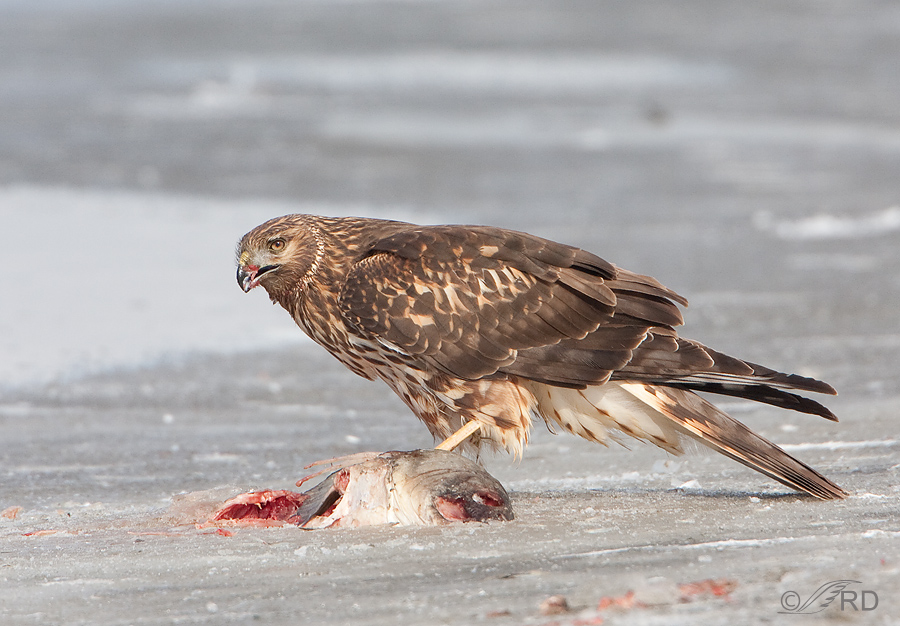
1/1250, 1/1000, ISO 500
Many of the carp are brought to the shores or ice surface by Bald Eagles which makes them available to the harriers who generally cannot retrieve them from the water.
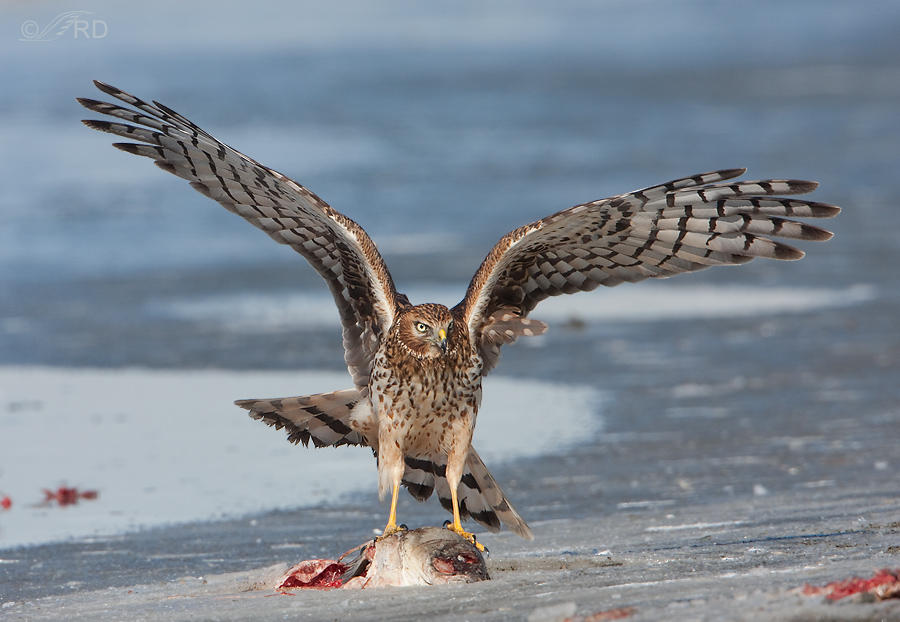
1/1250, f/8, ISO 500
An immature male harrier landing on a small carp.
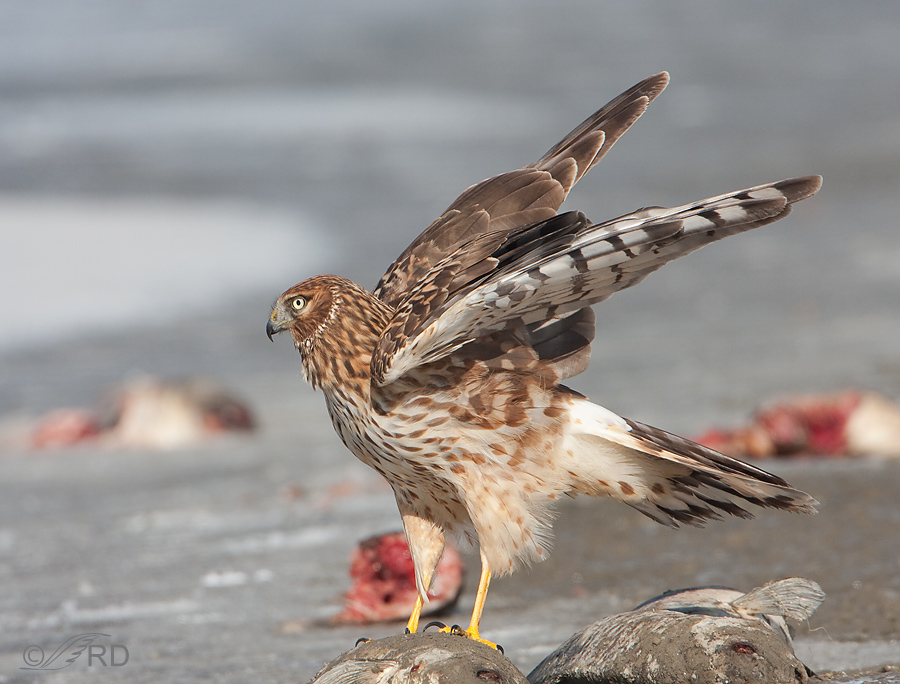
1/1000, f/8, ISO 500
As you can see in the background, at times the eagles provided a bounty of fish for the harriers to eat.
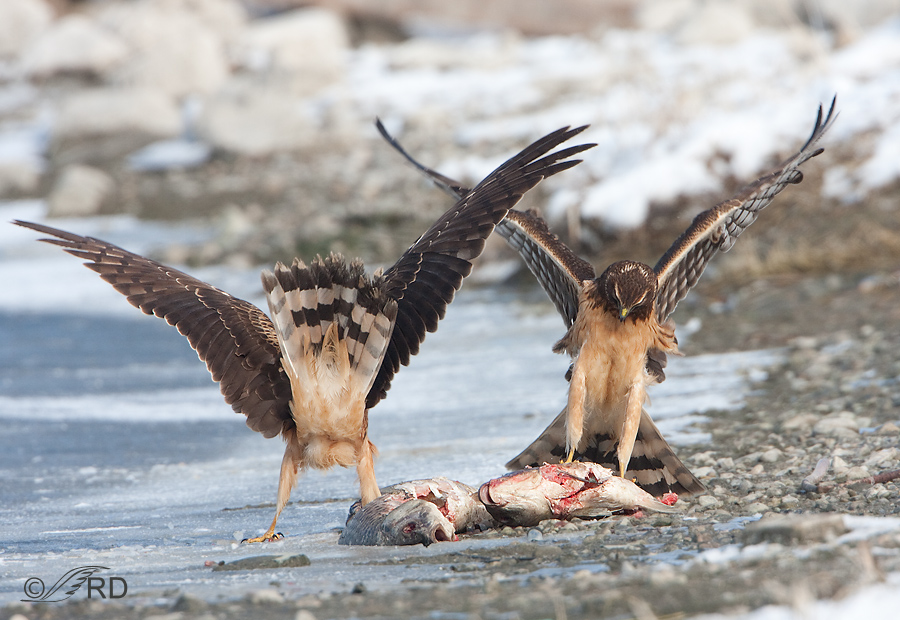
1/800, f/8, ISO 500
Harriers would often compete for and even fight over the fish. These are typical threat/possession postures when more than one bird was on the carp.
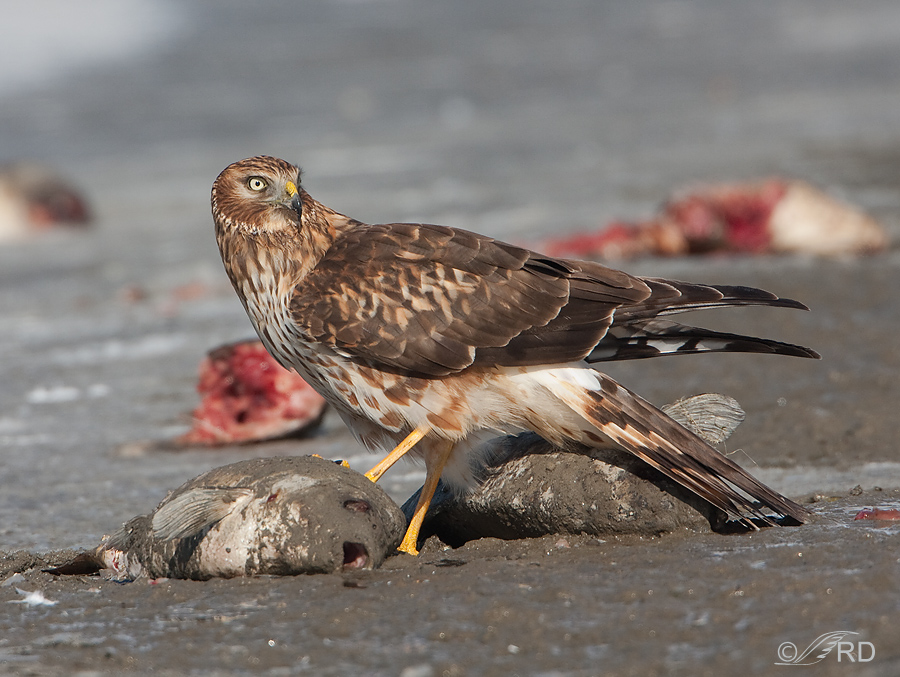
1/1000, f/8, ISO 500
This immature male was sated and apparently not hungry but he still couldn’t resist claiming possession of the fish by continually resting his foot on the carp as he watched warily for other birds to come in and challenge him for the prize.
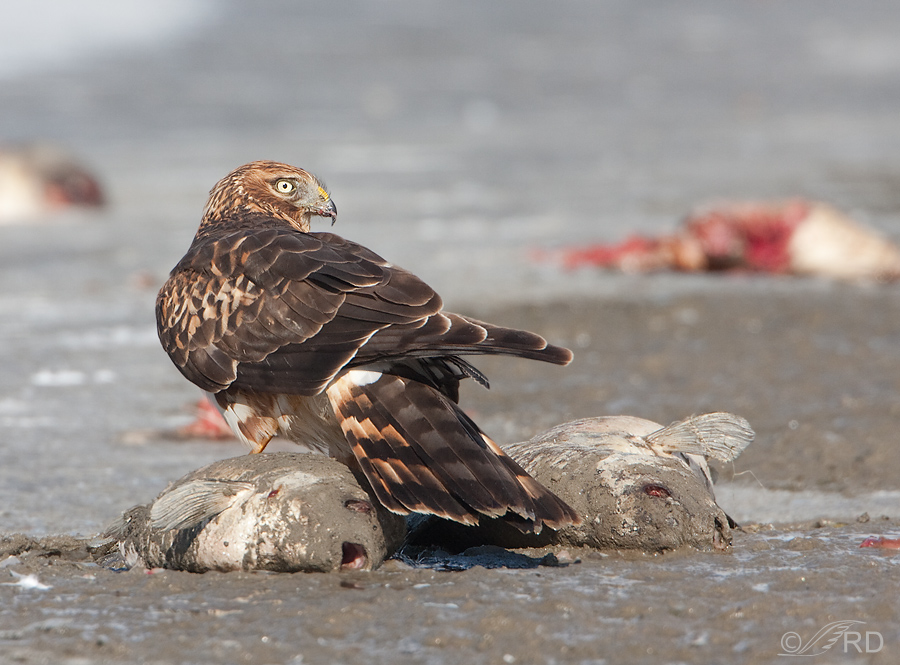
1/1000, f/8, ISO 500
But males are roughly one third smaller than adult females (sexual dimorphism) and whenever a male would see an adult female coming in to challenge him for the food he would beat a hasty retreat, as this one is preparing to do.
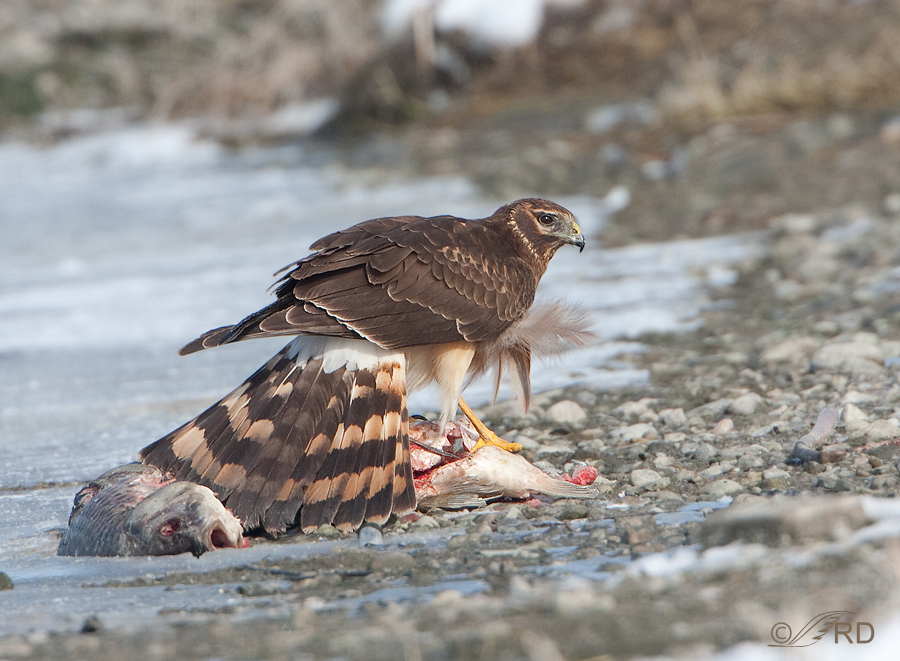
1/1000, f/8, ISO 500
Here’s another posture that apparently displays “possession” to other birds in the area. At times they would even spread their wings over the fish as they were eating.

1/1000, f/8, ISO 500
However, “possession displays” often didn’t work and fights were commonplace.
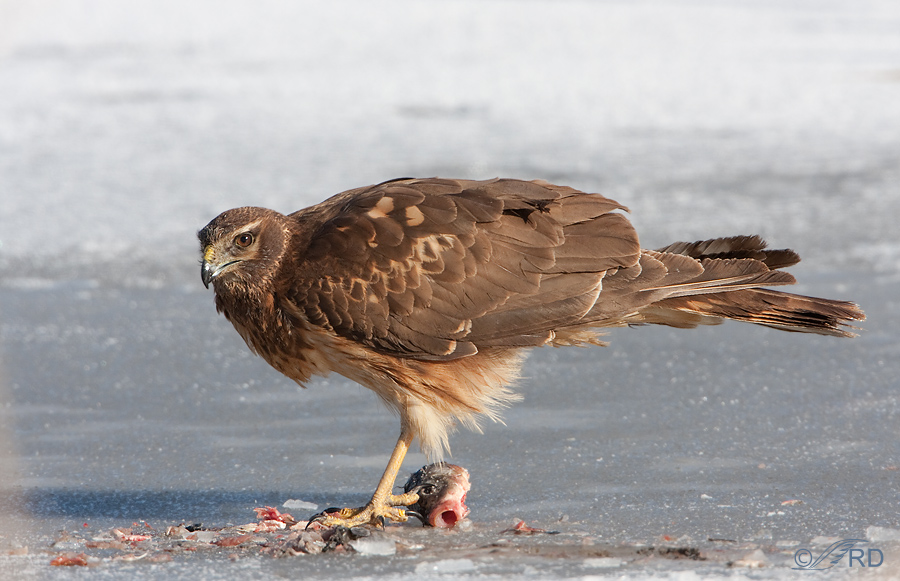
1/640, f/10, ISO 400
Less dominant birds were often left to feed over scraps.

1/1000, f/10, ISO 400
And at times those scraps were minimal indeed!

1/1250, f/10, ISO 400
A few carp were quite large but even the big ones were quickly picked clean by the ravenous harriers.
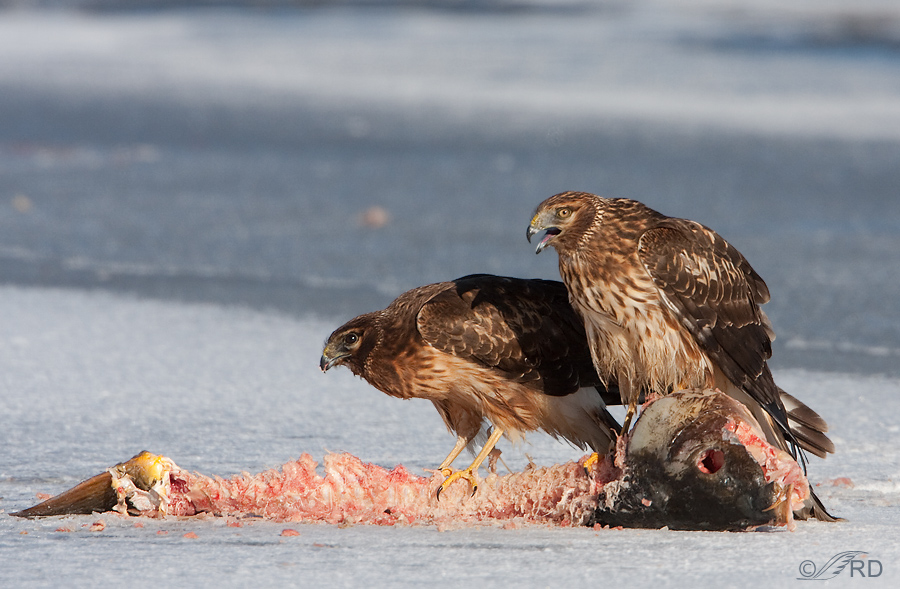
1/1250, f/8, ISO 400
At times more than one bird would feed on a fish simultaneously but it wasn’t a comfortable arrangement and their stress from doing so was obvious. But when another bird would come in to challenge them…
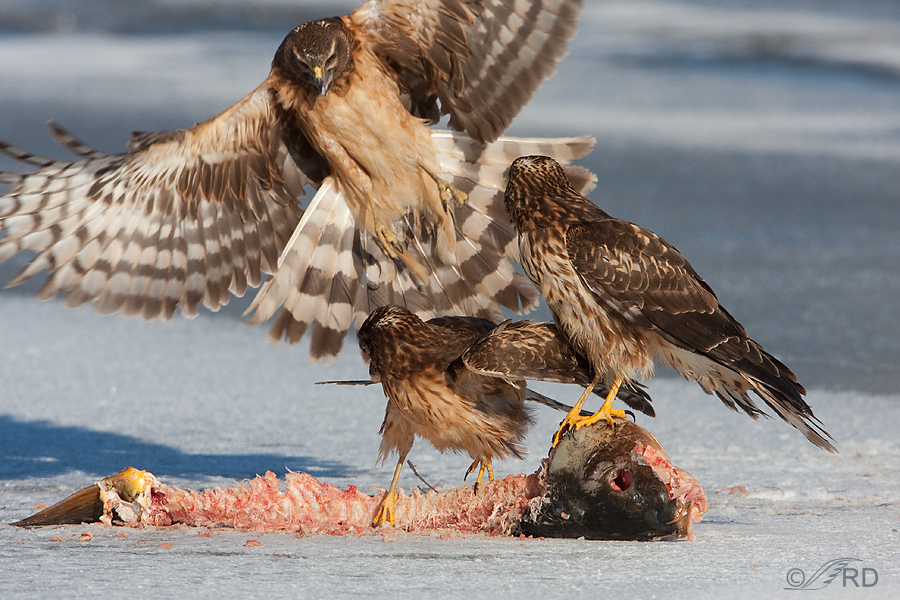
1/800, f/10, ISO 400
it could be pretty dramatic!
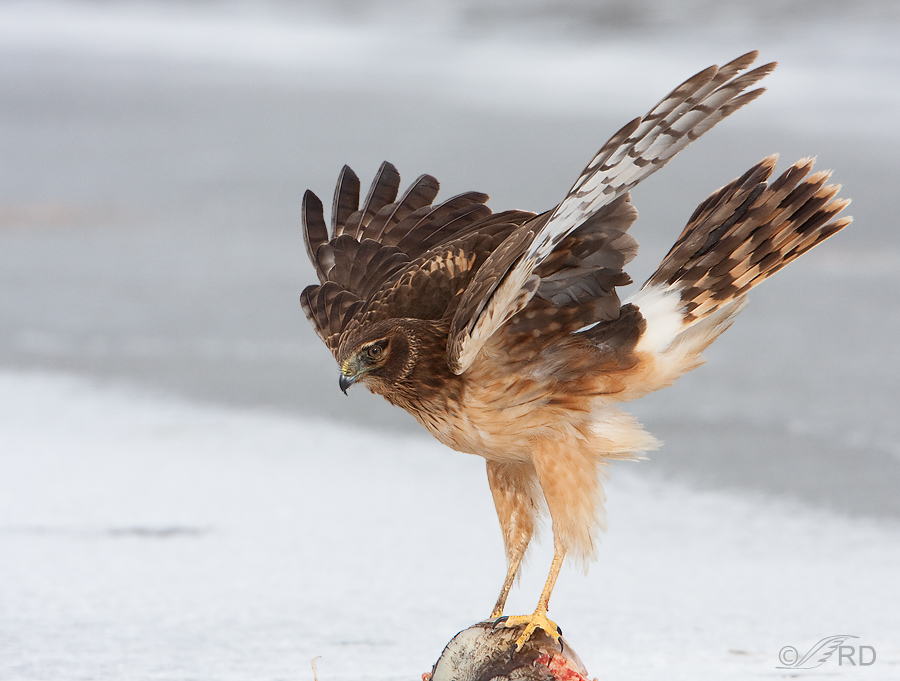
1/2000, f/8 Iso 400
Landing on the carp’s head. This harrier had a particular fondness for perching on the head of the carp even when it wasn’t feeding.
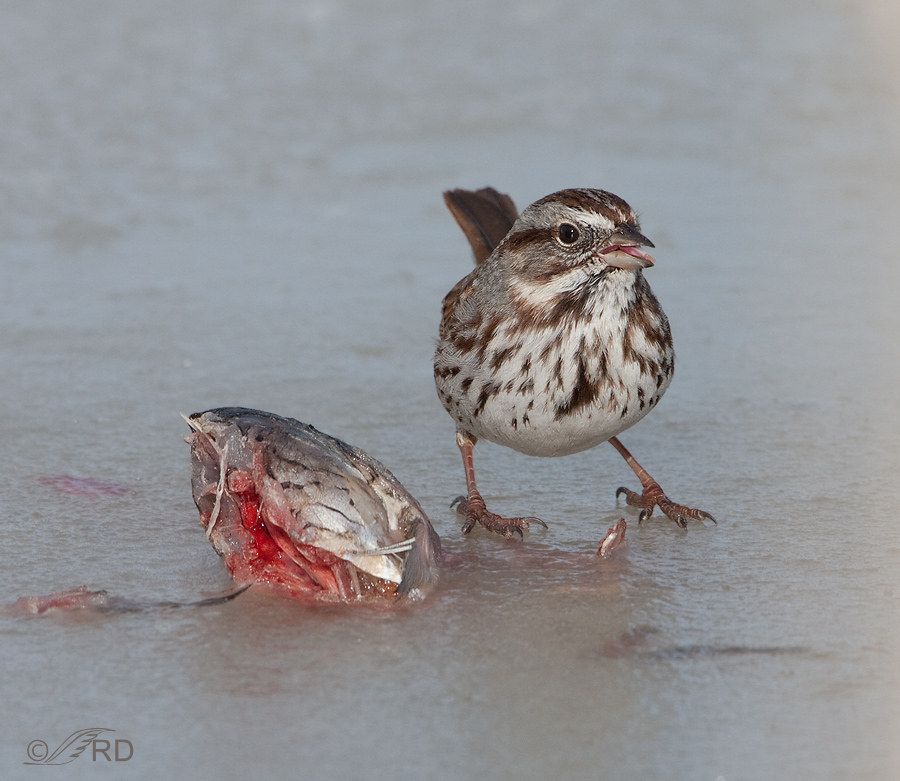
1/1250, f/10, ISo 400
As an indication of just how difficult this particular winter was for a variety of birds this Song Sparrow spent quite a while feeding on what’s left of this fish – something I have never seen before. If you look carefully you can see a morsel of fish flesh in the tip of the bill. The winter of 2008 was very good for bird photography but extremely difficult for many of our birds. For their sake I hope such conditions don’t happen again soon.
Ron
PS – a word of explanation about my camera settings (techs) for these images. Many of them were poorly chosen, even illogical. My excuse is that at the time I was still a digital photography beginner and had very little experience with my new 500 mm lens. My chosen settings for most of these shots would be quite different now. All images in this post were taken with a Canon XTi, Canon EF500mm f4L IS USM lens, mostly with attached 1.4 tc, from a tripod (some from within a blind).


Aloha from Haines Ak
Canned some Sockey Salmon the other day. Thru the guts and head out and was amazed to find a Harrier feeding on them. This was a first to for me. So had to googled it and found your photos.This bird looked healthy enough. Just think she had developed a taste for fish. Plenty of shore birds in the area. Also perched in a tree which i have never seen. Thanks for the photos. Jussi
And Aloha to you too, Jussi. I hear it’s still unusually cold up there (at least in Fairbanks).
In my experience Harriers only eat fish when they’re stressed – having a hard time finding enough of what they typically eat. Perhaps that’s the case up there this year with harriers – because of the unusual late cold…
Dear Sir, these are stunning images of a fascinating species, I am sure the late great Frances Hammerstrom and Donald Watson would have loved them.
Many thanks for sharing them
Stephen
Thank you for the thoughtful comment Stephen.
Excellent series Ron, the detail and action of the Harrier’s are first rate, well done.
Wow, what a study in extremist behavior. Fascinating story and sensation photography Ron.
Wish my continually bad setting choices had such great outcomes! Love your blog.
Hey, Ron–Not only are these awesome behavioral shots, they’re just plain great photography! I’ve enjoyed your work all winter and have been subscribed since I ran across you from a Google search on “Harriers”. Shame on me for not telling you sooner how much I’ve enjoyed this blog. 🙂 Best….Mitch
Great shots Ron I finally took a few shots of an ermin with a vole in it’s mouth. Thanks for some inspiration.